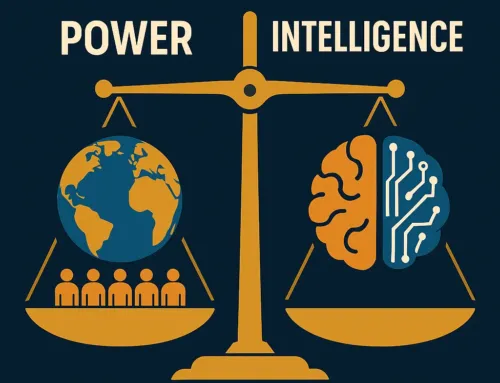
Approx. read time: 9.3 min.
Post: Radicalization in Germany: Islamist Fighters’ Children & Laws
Germany Surveillance Laws for Minors: Balancing Security and Child Protection in the Post-ISIS Era
🔎 Why this matters now
In recent years, senior German security officials have warned that a small but real number of children exposed to ISIS ideology could eventually re-enter Europe, including Germany, and—if left unsupported—pose security risks. In a 2018 interview, then-BfV chief Hans-Georg Maaßen urged a review of legal limits on monitoring minors so authorities could identify genuinely high-risk cases early.
This article explains how Germany surveillance laws for minors work today, what has and hasn’t changed, and how to balance child protection with public safety—without eroding rights or stigmatizing kids who are themselves victims of war and indoctrination.
📜 What “surveillance laws for minors” cover
When people discuss Germany surveillance laws for minors, they usually mean two things:
-
Intelligence monitoring by the BfV (domestic intelligence) under constitutional-protection and public-security mandates; and
-
Criminal justice for juveniles, where different rules apply on evidence, detention, and rehabilitation.
Maaßen’s call focused on (1): enabling proportionate, court-overseen observation when there is credible concern that a minor is being operationalized for violence.
👶 Age 14 rule: criminal responsibility in Germany
German law sets criminal responsibility at age 14. Children under 14 cannot be prosecuted; 14–17 are tried under youth law with a rehabilitation focus; 18–20 may still fall under juvenile law depending on maturity. This legal baseline shapes what investigators can do, what courts allow, and what social services must prioritize.
This is crucial for any refinement to Germany surveillance laws for minors: the law must remain consistent with age-based culpability and the primacy of educational and therapeutic measures for juveniles.
⚠️ The “child returnee” risk: what we actually know
-
From 2013–2017, roughly 850–960 individuals left Germany for ISIS territory; about one-third later returned. Children born in Syria/Iraq or taken there by German parents form a small cohort within that group.
-
Authorities planned for the return of over 100 children and infants of ISIS-affiliated Germans as of 2018. Most of these kids were under school age, and many were traumatized rather than dangerous.
Those numbers never amounted to a “wave,” but they justified robust child-centered reintegration and, where necessary, targeted monitoring under Germany surveillance laws for minors.
🧨 Case study: the 12-year-old Christmas-market plot
In 2016, a 12-year-old in Ludwigshafen allegedly tried to plant a nail bomb near a Christmas market—an alarming reminder that pre-teens can be manipulated into violence. He could not be prosecuted due to age; the case was handled by child-protection systems.
This incident is often cited by advocates of adapting Germany surveillance laws for minors—not to criminalize children earlier, but to enable upstream intervention when indicators of imminent harm appear.
🕵️♂️ What Maaßen asked for—and what changed since
Maaßen’s 2018 appeal asked lawmakers to re-examine restrictions that barred or hampered intelligence monitoring of minors below certain ages, arguing some ISIS-exposed children might have been trained or coerced.
Germany had already begun loosening some constraints on monitoring radicalized teenagers after youth-led plots in 2015–2016 highlighted loopholes. But the core 14-year threshold for criminal responsibility stayed intact, as did Germany’s strong youth-protection regime.
The modern question (2025) isn’t “Should we surveil all kids?” It’s “How can Germany surveillance laws for minors permit rare, tightly-controlled observation when credible, imminent-threat indicators exist—without normalizing surveillance of children?”
📊 2024–2025 threat picture from BfV – safety through formal education promoting
Germany’s security landscape has evolved. Recent BfV summaries show shifts across right-wing, left-wing, and religiously motivated crime, with online ecosystems accelerating radicalization. While data categories differ, the broader takeaway is consistent: platform-driven mobilization is a cross-ideology challenge that can affect youth.
That context matters for Germany surveillance laws for minors: the legal framework must handle any violent extremism involving juveniles, not only ISIS-linked risks.
📱 Online recruitment of youth
German officials long warned about “headhunter” recruiters who prowl social apps to identify and groom adolescents—sometimes as young as 13 or 14. The goal isn’t just ideology; it’s operationalization: move a teen from consuming content to doing something.
The vector today spans mainstream platforms, encrypted messengers, and gaming chats. That makes digital literacy, parental awareness, and platform cooperation crucial complements to Germany surveillance laws for minors.
⚖️ Rights, privacy, and proportionality
Germany pairs high civil-liberties standards with targeted security powers. Even critics of surveillance acknowledge Germany’s courts often trim overbroad authorities. Any modernization of Germany surveillance laws for minors must remain necessary, proportionate, and reviewable—with special protections for children’s data and swift off-ramps from watchlists when risk abates.
Key principles:
-
Best interest of the child as a primary consideration.
-
Minimum intrusiveness: prefer social/educational supports before secret monitoring.
-
Judicial warrants & audits for any covert measure.
-
Strict data retention and deletion for minors.
🧪 A practical risk model for authorities
To avoid overreach, a C-I-E triage framework helps target only the most acute cases:
-
Capability: Evidence a minor can realistically execute harm (access to weapons, bomb-making steps, or direct handlers).
-
Intent: Explicit planning or pledged allegiance beyond mere curiosity.
-
Exposure: Active contact with recruiters (“handlers”), consumption of operational content, or presence in violent networks.
Only when C+I+E reach a defined threshold should Germany surveillance laws for minors permit time-bound, court-authorized monitoring. Otherwise, default to support pathways (mentoring, counseling, family services).
🛡️ Guardrails for any expanded powers
If legislators update Germany surveillance laws for minors, civil-liberties guardrails should be built-in:
-
Judicial pre-approval for any covert tool used on a minor.
-
Child-rights advocate (ombudsperson) notified confidentially to review necessity.
-
Time limits + renewal tests (e.g., 30–60 days).
-
Data minimization: strict redaction of peripheral youth data.
-
De-listing & data purge once risk ends (with parental notice when safe).
-
Annual public reporting (aggregated) on volume, outcomes, and error rates.
These guardrails ensure Germany surveillance laws for minors remain exceptional measures—not a dragnet.
🏫 What schools, cities, and families can do
Early, voluntary supports work better than late, coercive ones:
-
School programs that teach critical thinking about propaganda, conspiracy tactics, and “us vs. them” narratives.
-
Trauma-informed counseling for children repatriated from conflict zones.
-
Mentor networks with trained community leaders to channel belonging into safe, prosocial activities.
-
Parent training to spot grooming patterns and escalate concerns appropriately—without panicking or stigmatizing.
-
Platform cooperation for rapid content takedowns and referral to safeguarding teams (separate from law-enforcement unless legal thresholds are met).
This ecosystem reduces the need for hard surveillance—and aligns with the best interests standard.
🍁 Donor due diligence in Canada (read this before giving)
Before you donate to any overseas-linked cause—especially where “humanitarian” and “political” activity can blur—do two checks:
-
CRA Charity Check (official) – confirm the group is a registered Canadian charity or other qualified donee, view filings, and verify status changes (revoked/suspended).
-
Public Safety Canada “Currently Listed Entities” – ensure the organization (or its aliases) is not a listed terrorist entity under the Criminal Code.
These two steps help Canadians avoid scams and keep funds from being diverted to proscribed actors. (Also see the Government of Canada’s sanctions/terrorist-entities updates for context.
🌍 Lessons from Europe and beyond
-
Don’t lower the age of criminal responsibility. International guidance and German legal culture prioritize 14+ as a floor, with youth law emphasizing rehabilitation. Surveillance tweaks should not morph into punitive drift for younger children.
-
Focus on operability, not ideology. Monitor when kids cross from harmful ideas into concrete plotting.
-
Invest in reintegration. Casework shows many “ISIS children” are traumatized victims, not perpetrators; robust psychosocial support reduces harm more than blanket monitoring.
🧰 Policy recommendations (2025)
To future-proof Germany surveillance laws for minors while protecting children’s rights:
-
Codify a tiered intervention ladder: social supports → safeguarding referral → judicially-approved, time-bound monitoring only for imminent risk.
-
Define objective threat indicators (C-I-E model) to prevent bias.
-
Create a youth-safeguarding judge panel trained on child psychology and radicalization.
-
Mandate independent oversight with annual anonymized transparency reports.
-
Guarantee exit pathways: automatic reviews, data deletion, and family notification after risk subsides.
-
Scale community capacity (family therapy, mentoring, school programs) to reduce reliance on surveillance.
-
Deepen platform partnerships for rapid, rights-respecting disruption of child grooming online.
❓ FAQs
Q1. Why revisit Germany surveillance laws for minors now?
Because online ecosystems accelerate youth grooming across ideologies, and a tiny subset of conflict-exposed children might present imminent-threat signals that current tools don’t handle well.
Q2. Does this mean treating children like adults?
No. The age-14 criminal-responsibility rule remains; any covert measure must be exceptional, court-approved, time-limited, and paired with care plans.
Q3. Was there ever a case of a very young child plotting an attack in Germany?
Yes—a 12-year-old attempted a nail-bomb plot in 2016; because he was below 14, the case went to child-protection, not criminal court.
Q4. Did German officials really warn about ISIS-exposed kids returning?
Yes. In 2018, the BfV chief asked to review limits on monitoring minors in light of potential “sleeper” risks among returnees’ children.
Q5. Aren’t most returnee children victims, not threats?
Correct. Many are traumatized and need psychosocial support. Policy should target behavioral risk (imminent mobilization), not punish identity or background.
Q6. How can Canadian donors avoid fake charities on this topic?
Use the CRA Charity List and Public Safety’s Listed Entities page before giving.
Q7. What changed about monitoring teens in Germany?
After 2015–2016, Germany re-examined rules that limited monitoring of radicalized teenagers, though rights safeguards remain strong.
Q8. Are social platforms still a major vector?
Yes—recruiters (“headhunters”) use mainstream and encrypted platforms to identify and groom youth.
✅ Conclusion & CTA
Protecting the public and protecting children are not opposites. Updating Germany surveillance laws for minors should center child welfare, reserve covert tools for truly imminent threats, and hard-wire judicial oversight, transparency, and exit ramps. Meanwhile, the biggest wins come from school-based literacy, family support, trauma care, and smart platform partnerships that reduce the need for surveillance in the first place.
🔗 Sources & References – media literacy and online safety
-
Reuters: BfV chief urges law review on monitoring minors (2018). Reuters – safety through formal education promoting
-
Reuters: Germany prepares for return of over 100 ISIS-affiliated children (2018). Reuters+1
-
Washington Post / TIME: 12-year-old Ludwigshafen Christmas-market plot (2016). The Washington Post+1
-
Reuters: Islamic State “headhunters” targeting German youth online (2017). Reuters
-
Konrad-Adenauer-Stiftung: Germany’s age-14 criminal responsibility (2025). kas.de
-
BfV (German domestic intelligence) 2023–2024 brief summaries. verfassungsschutz.de+1
-
Freedom House: Germany—Freedom on the Net (2024). Freedom House
-
EUAA: Syria Country Focus—camp & ISIS-children context (2025). European Union Agency for Asylum
-
CRA: List of charities (official). Canada.ca
-
Public Safety Canada: Currently listed entities (official). publicsafety.gc.ca
Related Videos:
Related Posts:
Stellantis Pulling Investments Out of Canada: 10 Impacts
Explosive Candlelight Concerts Oakville reviews: 7 Reasons to Attend
Leadership in Virtual Job Interviews: 8 Proven Ways
The Economic Fallout: Comparing Germany’s Post-WWI Recovery to Russia’s Current War Strategy
Historic Trade Deal: Canada and Germany Partner on Hydrogen Export Agreement
WhatsApp hacked after attackers install spyware on people’s phone
Exploring Islam: History, Contributions, and Dispelling Misconceptions
Facebook’s chief AI scientist: Deep learning may need a new programming language









